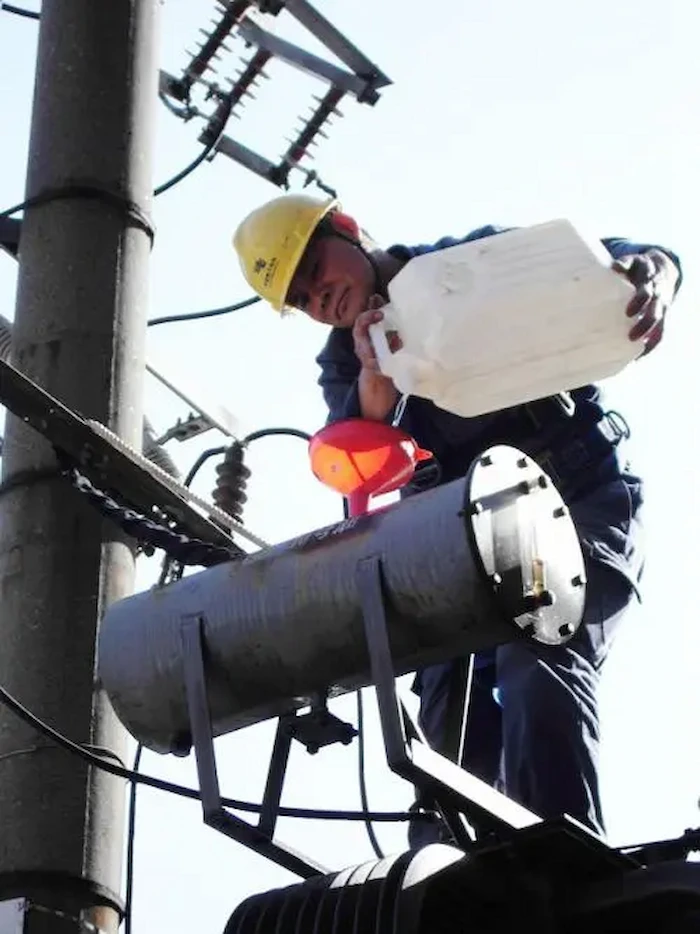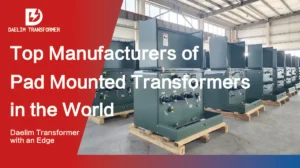
How to Choose Pad Mounted Transformer?
Table of Contents Selecting the right pad-mounted transformer requires careful consideration of several critical factors, as these ground-mounted distribution transformers play a vital role
ELECTRIC, WITH AN EDGE
During the operation of the transformer, the main factors affecting the insulation performance of the transformer are temperature, humidity, oil protection methods and overvoltage effects. Therefore, controlling these factors within a reasonable range is a key element to ensure the safe use of the transformer.

Power transformers are insulated by oil and paper, and the water content in oil and paper has different equilibrium curves at different temperatures. Under normal circumstances, when the temperature rises, the moisture in the paper will separate out into the pond; otherwise, the paper will absorb the moisture in the oil.
Therefore, when the temperature is high, the moisture content of the insulating oil in the transformer is greater; on the contrary, the moisture content is small.
When the temperature is different, the degree of cellulose dissolution and chain scission accompanied by gas generation is different. At a certain temperature, the production rate of CO and CO₂ is constant, that is, the gas content of CO and CO₂ in the oil has a linear relationship with time. When the temperature continues to rise, the production rate of CO and CO₂ tends to increase exponentially.
Therefore, the content of CO and CO₂ in the oil is directly related to the thermal aging of the insulating paper, and the content change can be used as one of the criteria for whether the paper layer in the sealed transformer is abnormal.
The life of the transformer depends on the degree of aging of the transformer insulation and the aging of the transformer insulation depends on the operating temperature. If the oil-immersed transformer is under rated load, the average temperature rise of the winding is 65°C, and the hottest spot temperature rise is 78°C. If the average ambient temperature is 20C, the hottest spot temperature is 98°C; at this temperature, the transformer can operate for 20— For 30 years, if the transformer is overloaded, the temperature will increase, which will shorten the life.
The International Electrotechnical Commission (IEC) believes that in the temperature range of 80~140C for transformers with Class A insulation, the effective life of transformer insulation will be doubled if the temperature increases by 6℃. This is the 6℃ rule, which shows the limitation of heat. It is more stringent than the 8°C rule recognized in the past.
The presence of moisture will accelerate the degradation of paper cellulose. Therefore, the production of CO and CO₂ is also related to the water content of the cellulosic material. When the humidity is constant, the higher the water content, the more CO₂ will be decomposed. Conversely, the lower the water content, the more CO is decomposed.
The trace moisture in the insulating oil is one of the important factors affecting the insulating properties.
The presence of trace moisture in the insulating oil has great harm to the electrical and physical and chemical properties of the insulating medium. The moisture can cause the spark discharge voltage of the insulating oil to decrease, and the dielectric loss factor tg8 increases, which promotes the aging of the insulating oil and deteriorates the transformer insulation performance. . Moisture of equipment not only reduces the operating reliability and lifespan of power equipment, but also causes equipment damage and even endangers personal safety.
The role of oxygen in transformer oil will accelerate the transformer insulation decomposition reaction, and the oxygen content is related to the oil protection method. In addition, the different ways of pool protection make CO and CO₂ dissolve and diffuse in the oil differently. For example, the dissolution of CO is small, so that the open transformer CO easily diffuses to the oil surface space.
Therefore, the volume fraction of CO in open transformers is generally not more than 300×10-6. Sealed transformer, because the oil surface is insulated from the air, so that CO and CO₂ are not easily volatile, so its content is relatively high.
①The influence of transient overvoltage
The phase-to-ground voltage generated by the normal operation of a three-phase transformer is 58% of the phase-to-phase voltage, but when a single-phase fault occurs, the voltage of the main insulation will increase by 30% for the neutral-grounded system and 73 for the neutral-point ungrounded system. %, which may damage the transformer insulation.
② The influence of lightning overvoltage
Due to the steep wave of the lightning overvoltage, the voltage distribution on the longitudinal insulation (inter-turn, parallel, insulation) is very uneven, which may leave discharge traces on the insulation, thereby destroying the solid transformer insulation.
③ Influence of operating overvoltage
Since the wave head of the operating overvoltage is quite flat, the voltage distribution is approximately linear. When the operating overvoltage wave is transferred from one winding to the other, it is approximately proportional to the number of turns between the two windings, which is likely to cause main insulation or Deterioration and damage of the insulation between phases.
The electromotive force when the outlet is short-circuited may deform the transformer windings and shift the lead wires, thereby changing the original transformer insulation distance, causing the transformer insulation to heat up, accelerating aging or being damaged, causing discharge, arcing, and short-circuit failures.

Table of Contents Selecting the right pad-mounted transformer requires careful consideration of several critical factors, as these ground-mounted distribution transformers play a vital role

The primary function of the pad mounted transformer is to serve as a critical distribution transformer that steps down higher primary voltage from utility distribution

A pad mounted transformer operates through electromagnetic induction, serving as a crucial distribution component that converts high voltage electricity to lower, usable voltages for residential

When looking for the best pad-mounted transformer manufacturer, it’s important to find industry leaders known for reliability and innovative solutions. Pad-mounted transformers are essential in
After filling in the contact information, you can download the PDF.